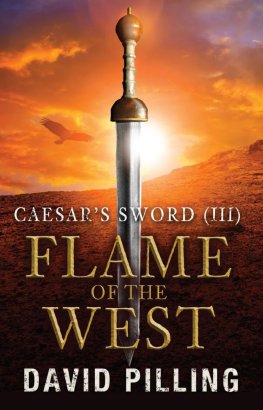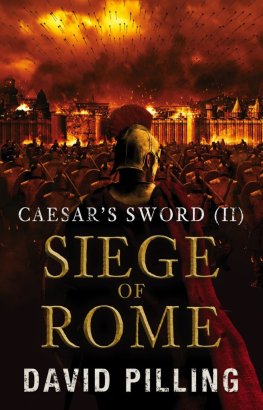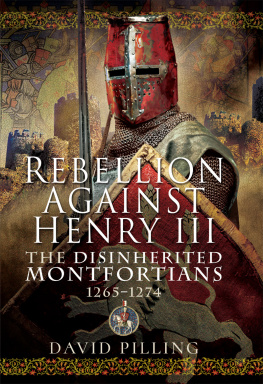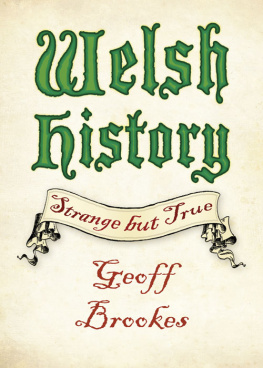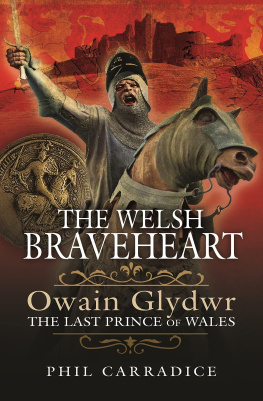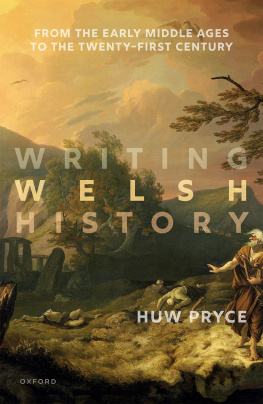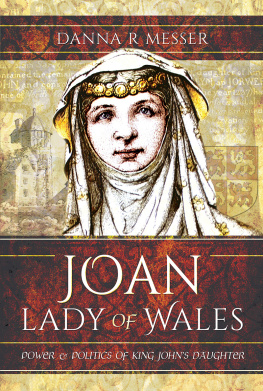Edward I and Wales, 12541307
Edward I and Wales, 12541307
David Pilling
First published in Great Britain in 2021 by
Pen & Sword History
An imprint of
Pen & Sword Books Ltd
Yorkshire Philadelphia
Copyright David Pilling 2021
ISBN 978 1 52677 641 9
ePUB ISBN 978 1 52677 642 6
Mobi ISBN 978 1 52677 643 3
The right of David Pilling to be identified as Author of this work has been asserted by him in accordance with the Copyright, Designs and Patents Act 1988.
A CIP catalogue record for this book is available from the British Library.
All rights reserved. No part of this book may be reproduced or transmitted in any form or by any means, electronic or mechanical including photocopying, recording or by any information storage and retrieval system, without permission from the Publisher in writing.
Pen & Sword Books Limited incorporates the imprints of Atlas, Archaeology, Aviation, Discovery, Family History, Fiction, History, Maritime, Military, Military Classics, Politics, Select, Transport, True Crime, Air World, Frontline Publishing, Leo Cooper, Remember When, Seaforth Publishing, The Praetorian Press, Wharncliffe Local History, Wharncliffe Transport, Wharncliffe True Crime and White Owl.
For a complete list of Pen & Sword titles please contact
PEN & SWORD BOOKS LIMITED
47 Church Street, Barnsley, South Yorkshire, S70 2AS, England
E-mail:
Website: www.pen-and-sword.co.uk
Or
PEN AND SWORD BOOKS
1950 Lawrence Rd, Havertown, PA 19083, USA
E-mail:
Website: www.penandswordbooks.com
Foreword
A n explanation is necessary for medieval Welsh terms of divisions and subdivisions of land. The largest division of territory was the cantref, which literally meant one hundred townships (cant a hundred; tref a township). This is thought to be the original unit of size within Wales. The cantrefi were later divided into commotes or cwmwd in Welsh. The Welsh lawbooks identify two commotes as forming one cantref, though in reality this neat definition often did not apply. Y Cantref Mawr (The Great Cantref) in the south western territory of Ystrad Tywi, for instance, consisted of seven commotes.
Finally, I wish to express my gratitude to various translators for providing interpretations of Latin and Welsh documents, principally Professor Jonathan Mackman, Richard Price and Dr Adrian Price. I also wish to credit Paul Martin Remfry, whose recent works on the downfall of Llywelyn and this era of Welsh history have been invaluable.
A complete bibliography is supplied at the end. Readers are welcome to contact me with any queries or comments at:
Backdrop
H e advanced into Wales on foot, at the head of his lightly clad infantry, lived off the country, and marched up and down and round and about the whole of Wales with such energy that he left not one that pisseth against a wall.
Thus Gerald of Wales, writing at the end of the twelfth century, described Harold Godwinssons devastating invasion of Wales in 1063. Harolds campaign resulted in the death of Gruffudd ap Llywelyn, the only high king of Wales, whose head was sent to Harold after being separated from its body by fellow Welshmen.
Three years later Harold himself was killed, hacked to death by Norman knights at the Battle of Hastings. His death spelled the end for Anglo-Saxon England, and his exploits in Wales were quickly forgotten. The Normans might have done better to study them, since no aspiring conqueror of the Welsh would enjoy the same success until the reign of Edward I (1272-1307).
Wales was a land of war, where the nobles and the common people were brought up in a martial culture. Turning to Gerald again: This people is light and active, hardy rather than strong, and entirely bred up to the use of arms; for not only the nobles, but all the people are trained to war, and when the trumpet sounds the alarm, the husbandman rushes as eagerly from his plough as the courtier from his court .
The Norman conquerors of England, with the insatiable land-greed inherited from their Viking forebears, soon turned their eyes west. From about 1070 onwards a stream of Norman adventurers carved out new territories in Wales, hacking their way through the forests to throw up quick motte-and-bailey castles. The Welsh, far more persistent in the defence of their country than the Anglo-Saxons, rose in arms during the reign of William Rufus (1087-1100) and drove out most of the invaders. However, they were unable to dislodge the enemy from Pembroke in the southwest, which left the Normans a vital foothold.
With the accession of Henry I (1100-1135), an uneasy peace returned to Wales. By now the March had been formed, a string of lordships stretching along the border from Glamorgan to Chester. The lords of the March ruled over a semi-autonomous realm sandwiched between England and Pura Wallia , governed by its own set of laws and where the kings writ barely ran, if at all. Over time they would intermarry with the native dynasties of Wales, until the originally Norman Marchers had the blood of Welsh princes flowing in their veins. Technically subservient to the English Crown, the Marchers often allied with the Welsh against the king, while at the same time offering the first line of defence and attack for royal invasions of Wales.
Henry himself, known as Beauclerc or Fine-Scholar because he could read, left his mark on Wales. He transported hundreds of Flemings to Pembroke, establishing a permanent alien colony on Welsh soil. On several occasions he found it necessary to roll his power into Wales, though he had no conquest in mind. Henry was chiefly concerned with protecting Normandy from the French, and unwilling to commit too many resources to Wales. He did find the time to enjoy a dalliance with Princess Nest, the Helen of Wales, a lady much in demand. Their grandson, Meilyr, was part of the first wave of Cambro-Norman invaders of Ireland.
The death of Henry, described by Welsh chroniclers as the man with whom none may strive, except God himself, resulted in chaos in England. His competing successors, King Stephen and Henrys daughter Matilda, fought each other for nineteen years, a dismal period in English history known as the Anarchy. This provided the Welsh with a golden opportunity to drive out the invaders for good. In 1136 the Normans and their Flemish allies suffered a terrible defeat at Crug Mawr, near Cardigan, virtually wiping out the Norman presence in central Wales. Their last outpost was Cardigan Castle, an isolated bastion in hostile country.
Once the Normans were defeated, the rulers of Wales turned on each other. Owain and Cadwalader, sons of the King Gruffudd ap Cynan of Gwynedd in North Wales, conquered Ceredigion and then divided it between them. In 1143 the alliance between Gwynedd and Deheubarth was severed when Anarawd, eldest son of Gruffudd ap Rhys the hope and stay and glory of the men of South Wales was killed by the followers of Cadwalader. No explanation is given in the Welsh annals for this crime, though it seems to have triggered a civil war in Ceredigion between Cadwalader and Owain. This rivalry between the various dynasties of Wales endured for centuries and undermined any hopes of a truly national unity.


